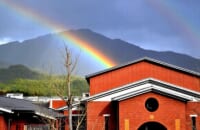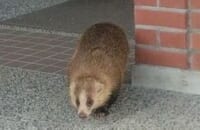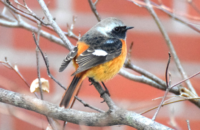
みなさんは、家から学校までの道のりで「土」を踏むことはあるでしょうか。都会の生活では9割以上の人が、土を踏まない生活を余儀なくされていると思います。でも、私たちが暮らしている惑星地球は、本来、岩石と土からできている星です。昔から土を踏み、その結果として足跡が残ることは地球人としては当たり前のことでした。
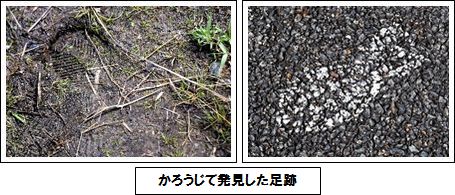 ある日、学校内でどこに足跡があるのか探してみました。すると、想遠館南側の土の部分に足跡(靴跡)が残っていました。またアスファルトの上にも移動方向がわかる跡が…。これは生徒のみなさんが、昼休みに元気に遊びまわった痕跡ではないでしょうか。このように、足跡があればさまざまな行動を想像できる証拠なので楽しいのです。
ある日、学校内でどこに足跡があるのか探してみました。すると、想遠館南側の土の部分に足跡(靴跡)が残っていました。またアスファルトの上にも移動方向がわかる跡が…。これは生徒のみなさんが、昼休みに元気に遊びまわった痕跡ではないでしょうか。このように、足跡があればさまざまな行動を想像できる証拠なので楽しいのです。
3年理科Ⅱでは「足型作成」という課題があります。卒業生の作品が理科MSに掲示してあり、ここでもみなさんの豊かな独創性に脱帽です。直立二足歩行になった私たちの足は、他の生物には見られない足裏の特徴を獲得しました。その形を分析することは「形の科学」としてもとても面白いです。

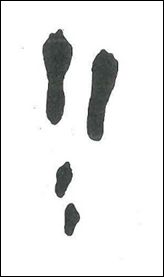
ところで右図の足跡は何の動物の足跡でしょうか。
問いかけに答えた当時の中学生が考えた図をいくつか紹介します。みなさんはこの動物の正体はわかりますか?
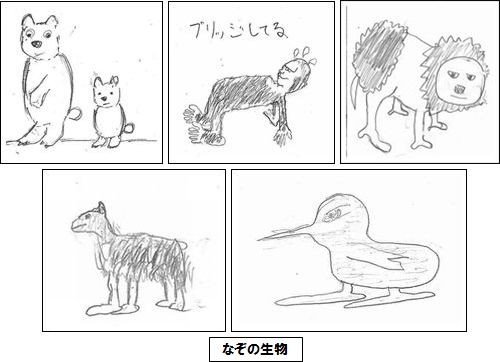
さて、みなさんはこの「足跡の残らない世界」で何を残すのでしょうか、また、何を残したいと思いますか?
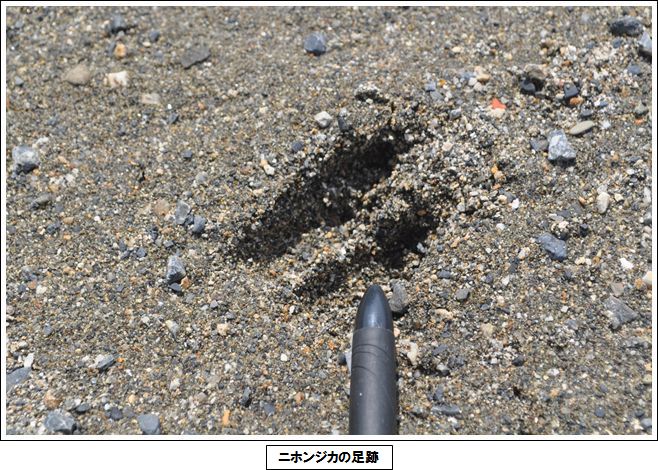
A World Without Footprints
I wonder if everybody steps on some “dirt” on their way to school. Living in the city, I think that more than 90% of people can’t help but live without stepping on dirt. But this planet that we live on is made from rocks and dirt. From the past, stepping on dirt, and leaving footprints, has been taken for granted.
One day, I searched for footprints around the school. I was able to find a footprint (shoeprint) in the dirt near the Souenkan building. I also found one on the asphalt nearby. They might have been the footprints of somebody who had played at lunchtime. If you find a footprint, it can be interesting to imagine where it came from.
In our 3rd year science classes, we study about types of footprints. Some of the students’ projects can be found in the Media Space. As we developed into upright bipedal walkers, our feet took on features that are not found in other creatures. The analysis of these features could be called a “science of form”.
What animal’s footprints do you think are in the diagram on the right? The pictures next to it are what some of our students thought. Please think about it.
What do you think will remain in this “world without footprints”? What do you want to leave behind?
《Words》足跡 footprints、土、土地 dirt、直立二足歩行 upright bipedal walkers
